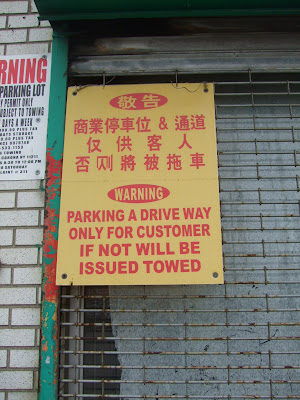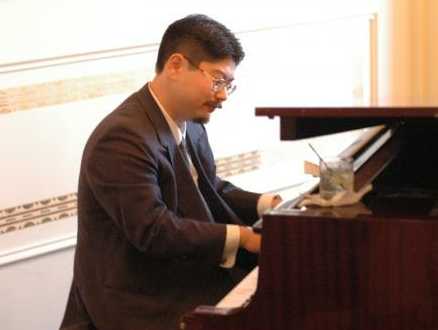Geekery Among the Ruins
Another extended New York City visit photo tour--includes a visit out to Flushing, Queens, to see the Unisphere (i.e., the big hollow globe from Men in Black). Lots of pictures follow. Browse it if you have time.
First of all, if you wanted to check out the photos with minimal color commentary, I put up the set on Flickr.
Work wrapped up Thursday mid-afternoon, so I actually made it to the city before nightfall. Wandered through Riverside Park on the West side of Manhattan, up to the Soldiers and Sailors Monument at 89th Street.

Had dinner at Earthen Oven on 72nd Street--I read a New York Times review over a year ago, and I've been meaning to go ever since. Outstanding tandoori lamb chops, plus the owner brought over a bowl of black lentils on the house--I wondered if he thought I was reviewing the place, given that I was eating alone. Beautiful weather--I sat at outdoor tables for a while and wrote postcards as the traffic pushed past me, at 9 PM. Spring... wow, what a concept.
Friday was a full day off, so I got to do lots of things on my NYC list.
I wanted to check out the Apple Store on Central Park South--the big glass box. Friends have asked me, "How do they heat and cool that space?" Well, I looked around--it's a single glazed (structural glazing) structure above-grade, with only perimeter heating/cooling; no specific air curtains or anything at the entrance. I figure there's plenty of heat rising from the store, and they just throw lots of energy at the problem.
Next, I wandered by Lever House--the very first modernist glass and steel curtain wall skyscraper, from 1952. The first floor is a public art gallery; the current exhibit is Terminal Stage, by Richard DuPont--a series of full-sized body replicas of the artist (the previous link connects to a video of how the sculptures were created).

The sculptures were created from full-body scans of the artist, but distorted in the horizontal axis along one direction, resulting in an odd stretching effect. But from two angles (parallel to the stretch axis), the body looks normal. Still photos don't quite do it justice, but walking around the mannequins gives you the odd sensation of looking at a continuously shifting funhouse mirror. More photos from the opening here.
Next, I wandered to the base of the Citigroup Center--the skyscraper that's really recognizable on the NYC skyline, with its 45 degree sloped top. The Wikipedia article is pretty comprehensive.

The supports are set up at the midpoints of the sides--which leaves the corners cantilevered; a shot from underneath here. There's a cool story about this building--they switched from welded to bolted connections mid-job, and the structural engineer only figured out after the fact that this weakened the structure enough that it could collapse in a severe windstorm. For the next three months, a construction crew welded two-inch-thick steel plates over each of the skyscraper's 200 bolted joints during the night, after each work day, almost unknown to the general public.
It was then a short walk to Grand Central Terminal; a PBS documentary mentioned an exhibit in the basement--Meet Me at Grand Central: Photographs from the early 1950s. Kinda neat.
Then came my big adventure for the day: taking the 7 Train all the way out to the end. I got there and started with a wander around Chinatown--the New York Times had an article on the three Chinatowns in NYC: Manhattan (the original one), Brooklyn (Sunset Park), and Queens (Flushing—my destination that day). Walked around, grabbed a scallion pancake from a streetside vendor, and then sat down for lunch. Found an awesome Chinglish sign:

Also, another amusing sign here.
I then headed to Flushing Meadows Corona Park--home of the Unisphere and the New York Pavillion (the structures are left over from the 1964 World Fair). This trip was of a special importance to me, having grown up on Long Island. The park is right by the highway, so I've been driving past these monuments for my entire life, but I've never gone to them. Thought it was high time to fix that.
In case it's not obvious, the Unisphere is large--120 feet in diameter. It's made out of 304 stainless (donated by US Steel, back in the 1960's when it was still an American powerhouse company). The rings around it are the orbits of the Gagarin, Glenn, and Telstar, the first communication satellite.

It was then just a short walk to the New York State Pavillion--i.e., the flying saucer from Men in Black, with the low structure ("The Tent of Tomorrow") underneath. No large bug-like aliens were spotted that day.

After the 1964 World Fair closed, these structures were briefly used (the tent as a roller rink), but they were abandoned-in-place shortly afterwards and locked down. If you look at the Flickr pics, check out the external elevator on the tower--one is locked mid-height, to prevent access. The elevators are defunct enough that in order to inspect the towers, they have to send up the crew in climbing harnesses:
During the summer the red warning light on the top of the highest tower, some 226 feet up, went out. It had to be quickly replaced, per federal regulations; La Guardia Airport is close by, after all. But the burnout of a small light presented a large problem for the pavilion’s custodian, the Department of Parks and Recreation.
With the elevators now stuck like barnacles to the sides of the towers, and with the stairwells rotted beyond use, parks officials had to hire a company that specializes in rappelling up buildings to conduct inspections and repairs. Which means, then, that someone climbed up the futuristic edifice by rope to change that light bulb.
I am fascinated by modern large-scale monumental ruins--thus the title of this post. It feels like this continent, due to its history and settlement timeline, has little to offer in terms of monumental ruins--no Parthenon, Roman Colosseum, Angkor Wat, or Machu Picchu. Maybe there are examples that would qualify (cliff dwellings of the Anasazi?)--let me know if I'm misinformed; abandoned steel mills and Sutro Baths spring to mind. It seems that modern ruins are rarely left in place, instead of being plowed under, developed over, or turned into an upscale shopping mall. There's a certain melancholy and smallness that you feel, wandering around a derelict like this. This site is on World Monuments Fund’s list of 100 endangered sites (related NYT article here).
Another short hop brought me to the Queens Museum--the home of The Panorama: a huge (9300 sf) scale model of the five boroughs of NYC.

For scale, in the top right of the photo, you can see a glass walkway railing that’s about chest-high. The aesthetics reminded me of the set design in the scene of Hitchhiker's Guide to the Galaxy when Slartibartfast takes Arthur Dent through the showroom of Magrathea—a wonderful 1960's look-at-our-awesome-future/educational science film aesthetic.
The Queens Museum also has an exhibit on restoring the outdoor terrazzo map that was on the floor of the New York State Pavillion. An excerpt from the Times article that inspired me to do this visit ("In the Tent of Tomorrow, a Faded Map of Yesteryear"):
For the first time in decades, there appears to be a chance that a half-acre terrazzo road map of New York State from the 1964-65 World’s Fair — an exuberantly overstated mix of small-town parochialism, space-age optimism and Pop Art irony — will be conserved as the valuable artifact it is.
The map is hidden from public view on the floor of the abandoned, roofless Tent of Tomorrow in the New York State Pavilion, at what is now Flushing Meadows-Corona Park in Queens. The 130-by-166-foot map has cracked and crumbled badly. Vandals have wrecked what the freeze-thaw cycle has not, and weeds are a steady menace. Seneca Falls is now “ ca Falls,” for example.
However, the map is being restored by a group from University of Pennsylvania—they are removing the panels, bringing them indoors, and cleaning them, and restoring missing pieces. Cornell folks should check out the Ithaca part of the map.
The day wrapped up with drinks and dinner in Midtown with Perlick, Ann W., and her boyfriend Nico, at The Zipper Factory, a nice local place.
Did another round of exploring on Sunday afternoon. Included an exhibit on lacquer work of Shibata Zeshin at the Japan Society (East Side), a round of postcards, walking down to the East Village, and dinner at the Second Avenue Deli (mmmm... pastrami-licious). The vestibule of the Japan Society is shown below. Seems like cool ideas for my living room someday [grin].

Not a bad trip at all; taking a nice relaxing ride on Acela back to Boston now.


5 Comments:
I love that story about the building falling down potential - we read an article on that at MIT. Interesting stuff.. - daniele
Cool trip - you pack a lot into one weekend!
sounds like an awesome trip. i'd throw the old smallpox hospital on roosevelt island into your next trip: it's less visible than one would like, but i think it'd be up your alley. plus the cable car across is cool, and there's a nice used bookstore for browsing (outside) on the manhattan side. neat map, too. interesting how you can really see the discontinuities in the tiling in that pic, like to the northwest of ithaca.
Incidentally, yesterday Emily and I drove straight across LI to the Orient Point harbor.
I'm so sorry, Bats. I didn't know. I didn't know.
--Omri
i'd throw the old smallpox hospital on roosevelt island into your next trip: it's less visible than one would like, but i think it'd be up your alley. plus the cable car across is cool, and there's a nice used bookstore for browsing (outside) on the manhattan side.
Cool--I've been to Roosevelt Island before and taken the tram, but I didn't know about the hospital.
You've been to the pavilion in San Francisco near the Exploratorium, right?
Definitely, you should talk to David R. about this sort of thing when next you're in Ohio--I remmeber that he really liked taking photos of ancient industrial decay from Niagara Falls and Pittsburgh. (Pittsburgh being a steel town, there's a lot there...)
This really is a neat trip description. I need to start keeping lists of unusual places to go in Toronto, or some other cities I go to.
Post a Comment
<< Home